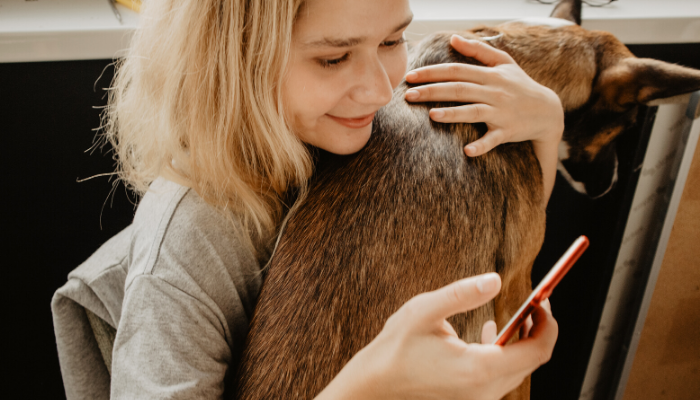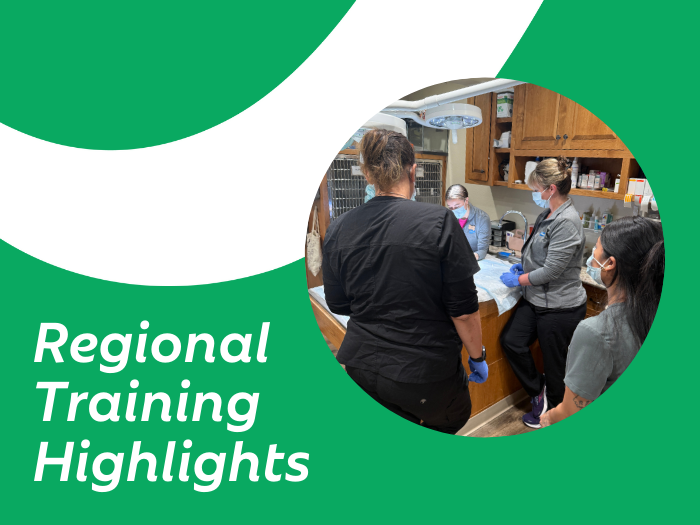Using Telemedicine to Revolutionize Patient Care

May 27, 2020
Over the past few months, our practices have had to make significant adaptations to continue seeing patients safely and effectively.
In addition to utilizing curbside service, animal hospitals across the country are now relying on telemedicine to bridge the gap between providing necessary care and keeping their teams and clients safe. At VetCor, our veterinary leadership team was at the heart of our practices’ decision to offer telehealth appointments.
Our Journey to Telemedicine
Though many of us think about video calls when we hear words like “telemedicine” or “telehealth,” the reality is that is that any type of medical care provided remotely is considered telemedicine. As Dr. Bryan Haag reminds us, the majority of veterinarians already utilize telemedicine with their current clients - they just might not know it. Because whether you’re responding to a late night text or carrying out a phone consultation, you’re utilizing telemedicine.
In the midst of the coronavirus outbreak, many of our practices had to significantly scale back the volume of routine services they were able to offer or stop providing non-essential services altogether. Of course, flattening the curve was everyone’s top priority but that didn’t mean their patients didn’t require care. So in mid-March, when Dr. Haag received a call from one of our senior regional managers, Karen, asking if he could look into telemedicine options, he recruited Drs. Chris Rohwer, Chad Harris, Aaron Smiley, and Sara Mey to explore their options.
From the beginning, Dr. Rohwer was enthusiastic about video conferencing options and finding a platform that would work for everyone. In fact, he spoke with a local IT professional and, by the end of the week, he had set up appointments with his fellow vet leaders to test things out. Though several telemedicine options existed, he wanted one that was free, easy to use, and didn’t require clients to download an app. He consulted with a video firm and decided that doxy.me would be the best option for our network of practices.
Putting Telemedicine to Good Use
At first, our practice teams used telemedicine on a somewhat limited basis. Some common telehealth appoints consisted of triage appointments and dermatological exams. However, once our teams became more comfortable with the software, they realized that they’d be able to expand the types of telemedicine appointments they were able to offer to their clients. Whether it was because they were unable to accommodate a curbside service appointment or their client was immunocompromised or afraid to leave their home, they’d be able to help them get their pet the care they needed.
Telemedicine has now become a staple of curbside service appointments at our practices across the country. It’s been used to improve the client experience while they wait in their car during their pet’s appointment by allowing them to watch the exam and confer with staff. Plus, it’s freed up phone lines for sick pets and those with emergencies which is absolutely vital.
Dr. Rohwer recalls speaking with some other veterinarians about the future of telemedicine in the veterinary field at this year’s Veterinary Meeting & Expo (VMX) conference back in January. At the time, they all agreed that, while telemedicine was a good thing, the profession might not be quite ready to embrace it. Fast forward to today and telemedicine is no longer just a backburner project or a tool that’d be nice to have at some point. It’s here, right now, and it’s revolutionizing the way our practices provide care for their patients and helping us do our part to flatten the curve.
We can’t articulate how grateful we are for the veterinary leaders who stepped up to tackle the issues presented to them by coronavirus, but we know their efforts have made a lasting impact and that they’ve helped propel us into the future.




